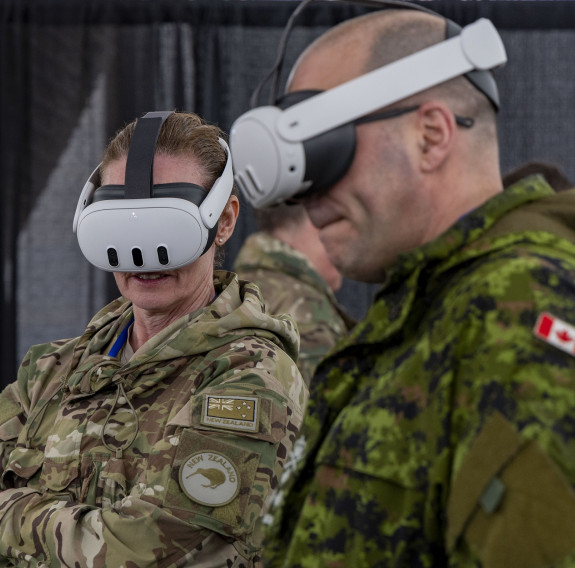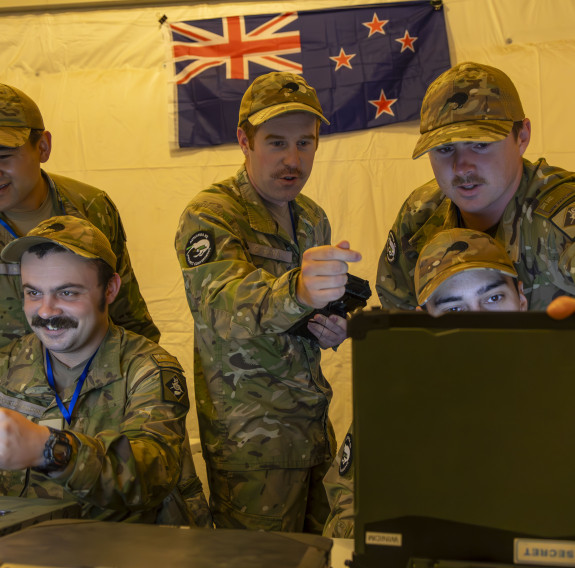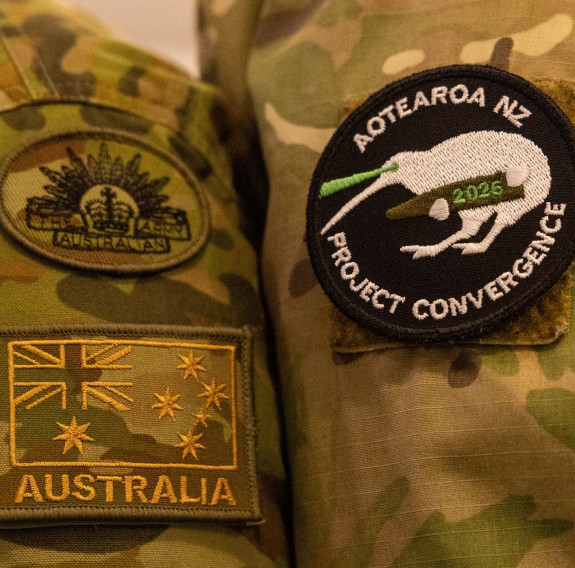
New Zealand-led task force makes $NZ332-million drug bust in the Middle East
14 March 2025
Unfortunately you are viewing this website on an outdated browser which does not support the necessary features for us to provide an adequate experience. Please switch to a modern browser such as latest version of Google Chrome, Mozilla Firefox, Apple Safari or Microsoft Edge.
Ngā mihi nui
Just over 200 kilometres outside Los Angeles in the Mojave Desert, the US Army’s Fort Irwin National Training Centre has once again played host to the largest military experimentation exercise of its kind, Project Convergence Capstone 5 (PCC5).
Led by the US Army it included all branches of the US military (Army, Navy, Air Force, Marines, Special Forces and Space Force) as well as personnel representing our Five Eyes partners and France.
The New Zealand Army had a contingent of around 30 personnel participating in the first scenario of PCC5, predominantly across information, communication and fires roles.
The first scenario of the activity focused on the next generation of Command and Control, and Fire Control Systems in a simulated environment and included a particular focus on human-machine integration.
New Zealand’s Senior National Officer at the exercise, Lieutenant Colonel Richie Appleton says our participation at these sorts of activities is vital.
“Threats to our region are now present from greater ranges than ever before due to the proliferation of new technologies, the extended reach of lethal fires and ubiquitous surveillance. It means the need to be armed with the latest military knowledge and capabilities is more important than it has been for decades,” said Lieutenant Colonel Appleton.
PCC5 is a critical proving ground for emerging technologies and concepts that are crucial to enabling a data-centric and networked fighting force, and offers the NZDF the chance to observe and learn from our partners and take those lessons learned back home.
“It puts us at the cutting edge of military experimentation and gives us the opportunity to participate and observe exercises at a scale we can’t replicate at home."
“Whether it’s on the tools, or as observers, our presence at PCC5 is well-received by all our partners, and we are respected by militaries the world over as having highly-trained personnel who can add value to these multi-national efforts.”





The New Zealand Defence Force’s (NZDF) Land Component Commander, Brigadier Jason Dyhrberg, says Project Convergence also provides an invaluable opportunity to keep testing our interoperability and partnerships with other nations.
“PCC5 is an opportunity for us to further enhance our interoperability with our ally Australia, particularly as it relates to communications and electronic warfare.”
“Continually testing and enhancing our interoperability with Australia across all areas of our forces in turn supports our commitment to each other’s security in the South Pacific, and our shared focus on the security and stability of our wider region," Brigadier Dyhrberg said.
“To that end, PCC5 is also a great build-up and test of that level of partnership ahead of Exercise Talisman Sabre later this year, which will see a significant contingent of NZDF personnel and platforms deployed.”
The New Zealand Defence Force’s (NZDF) Land Component Commander, Brigadier Jason Dyhrberg, says Project Convergence also provides an invaluable opportunity to keep testing our interoperability and partnerships with other nations.
“PCC5 is an opportunity for us to further enhance our interoperability with our ally Australia, particularly as it relates to communications and electronic warfare,” Brigadier Dyhrberg said.
“Continually testing and enhancing our interoperability with Australia across all areas of our forces in turn supports our commitment to each other’s security in the South Pacific, and our shared focus on the security and stability of our wider region. To that end, PCC5 is also a great build-up and test of that level of partnership ahead of Exercise Talisman Sabre later this year, which will see a significant contingent of NZDF personnel and platforms deployed.”